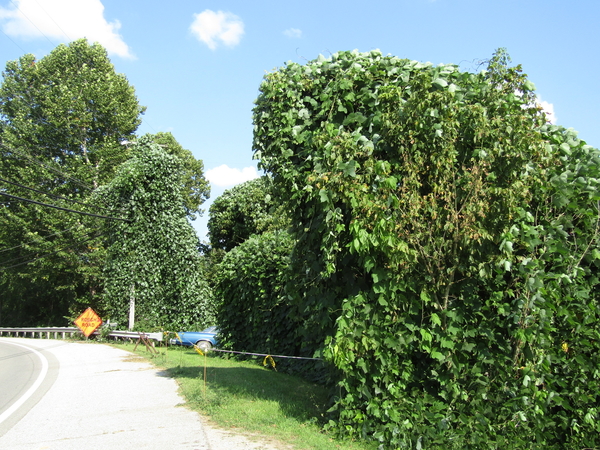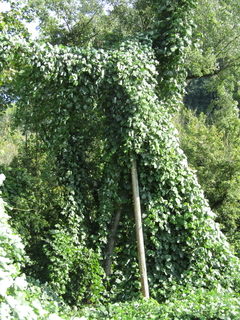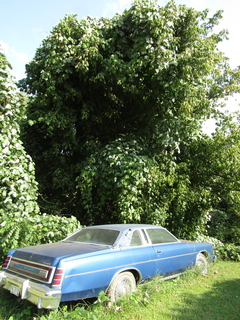KUDZU: THE WEED THAT SMOTHERED THE SOUTH INVADED ARNOLDSBURG

Kudzu covers entire old Arnoldsburg building ...


... trees and power poles
By Forrester Russ Richardson 2019
Kudzu can be found all around Calhoun, most recently in Arnoldsburg.
Kudzu is a climbing perennial vine that has long been a problem for the Deep South. It was first introduced from tropical Asia to the United States in the late 1800s as a landscaping plant but didn't spread into the woods and become a problem until the 1940s and 1950s when is was given away by government conservation programs for soil stabilization and as potential fodder for livestock.
For old time Calhouners general comparison, Kudzus' introduction to the South was as catastrophic for farmers there as multifloral rose has been here.
Kudzu vines can grow several inches every day during hot humid weather and will climb and completely cover anything they encounter. Just a few years after it was first distributed and planting was encouraged, a permanent and unsuccessful effort was begun to slow the spread of the plant.
Kudzu ruins timber, breaks down shade trees and can collapse buildings. It can also become a fire or shock hazard when it covers powerlines and utility poles.
Calhoun County is near the traditional northern limit of where kudzu was able to survive without being regularly killed by winter freezes. In 2014 a Canadian scientist visited Calhoun County and sampled plants from a small infestation in Lower Beech and a large one on WV Route 5 near Big Bend.
The scientist explained that kudzu has begun to migrate north and Canadian agriculture and forestry agencies were deeply concerned about kudzu becoming established in Canada.
The scientist from Montreal said she was sampling the northernmost infestations they could locate at the time to determine if there was any difference in the genetic make-up of kudzu near the northern fringe of its range.